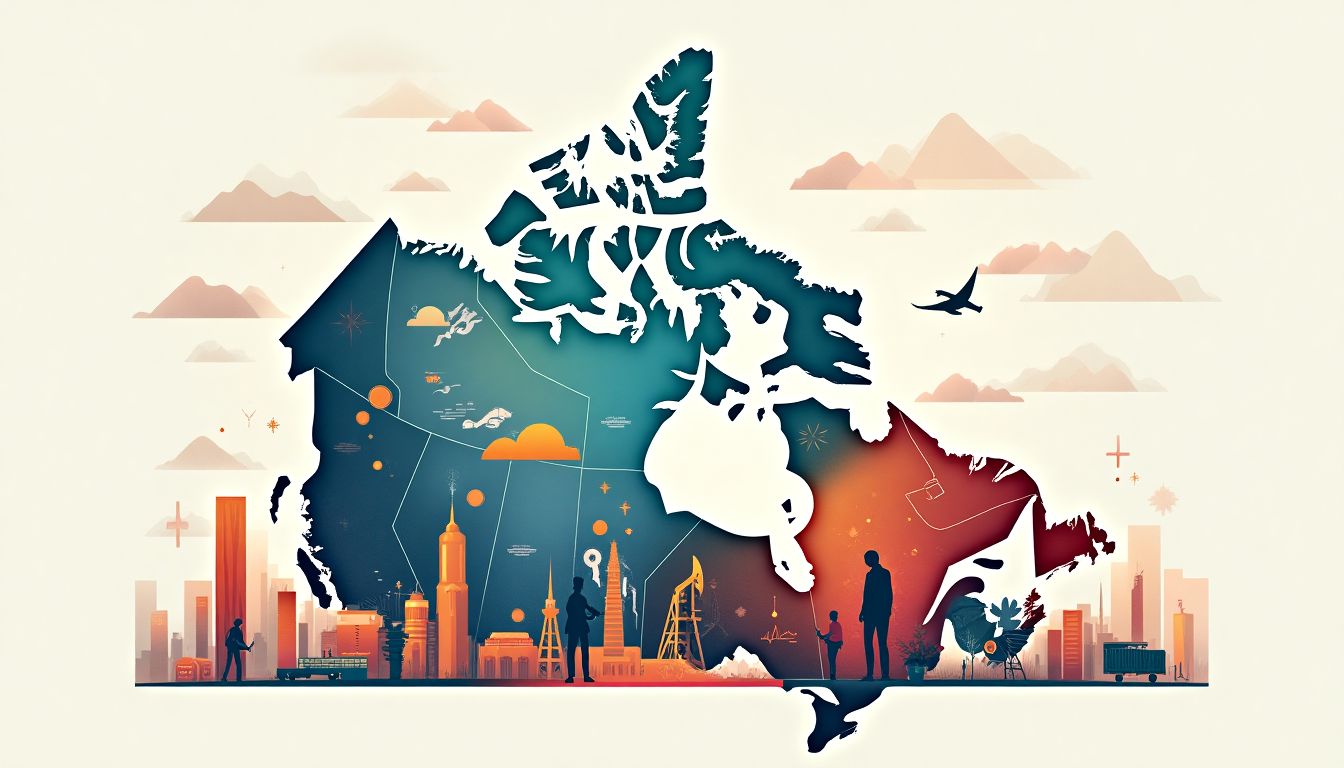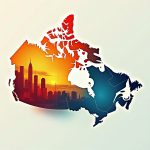What if nearly one in ten Canadians is earning over $100,000 a year? This isn’t just a hypothetical question—it’s a reality that’s reshaping the country’s economic and social fabric. As the cost of living skyrockets and the gap between the haves and have-nots widens, understanding who these high earners are and what their presence means for Canada has never been more important. From bustling urban centers like Toronto and Vancouver to resource-rich provinces like Alberta, the story of Canada’s six-figure earners is as complex as it is fascinating.
Renowned economist Thomas Piketty, author of Capital in the Twenty-First Century, has long warned about the dangers of income inequality. Similarly, Canadian researcher Armine Yalnizyan has explored how wage disparities impact social mobility in her work with the Canadian Centre for Policy Alternatives. Even tech luminary Elon Musk has weighed in on the global conversation about wealth distribution, though his focus is often on billionaires rather than the six-figure crowd. These voices remind us that the conversation about high earners isn’t just about numbers—it’s about people, policies, and the future of a nation.
This article dives into the data, trends, and implications of Canadians earning over $100,000 annually. We’ll explore who these earners are, where they work, and how their presence is shaping Canada’s economy. From the industries driving high incomes to the geographic distribution of top earners, we’ll uncover the stories behind the statistics. And because no discussion of income is complete without a look at the bigger picture, we’ll also examine the challenges and opportunities this trend presents for Canada’s future.
The Current Landscape of High Earners in Canada
Who are the Canadians pulling in six figures? They’re not just CEOs in corner offices or tech wizards in Silicon Valley North. They’re doctors, engineers, and even skilled tradespeople. According to Statistics Canada, high earners are a diverse group, but they share some common traits. They’re often highly educated, with many holding advanced degrees. They’re also more likely to live in urban areas, where high-paying jobs are concentrated. And while men still dominate the six-figure club, the number of women in this income bracket is steadily increasing.
Industries play a huge role in determining who makes the cut. Finance, technology, healthcare, and natural resources are the powerhouses of high incomes. For example, Alberta’s oil and gas sector has long been a magnet for top earners, while Toronto’s financial district is home to some of the country’s highest-paid professionals. But it’s not just about the industry—it’s also about the skills. Specialized knowledge and expertise are often the keys to unlocking a six-figure salary.
Geography also matters. Urban centers like Toronto, Vancouver, and Calgary are hotspots for high earners, thanks to their thriving economies and job markets. But it’s not just the big cities—smaller cities with strong industries, like Halifax’s growing tech scene, are also seeing an uptick in six-figure salaries. Meanwhile, rural areas often lag behind, with fewer opportunities for high-paying jobs.
Over the past two decades, the number of Canadians earning over $100,000 has been on the rise. This isn’t just a reflection of economic growth—it’s also a result of inflation. What was once considered a high income is now the new middle class in many parts of the country. But while the number of high earners is growing, so is the gap between them and the rest of the population. This trend has far-reaching implications for Canada’s economy and society, which we’ll explore in the sections to come.
Economic Growth and Industry Shifts
Canada's economic engine has been humming along, and it's no surprise that certain industries are revving up the income charts. The natural resources sector, particularly oil and gas, has been a powerhouse for Alberta, making it a haven for high earners. The Statistics Canada data shows that Calgary, often called the "Oil Capital of Canada," has a significant concentration of six-figure earners. But it's not just oil; technology and finance sectors in cities like Toronto and Vancouver are also minting millionaires—or at least high-income earners.
Globalization has played a role too. Companies like BMO and RBC are competing on a global stage, which means they need top talent—and they’re willing to pay for it. The tech boom in Canada, driven by companies like Shopify, has also created a new class of high earners. Imagine coding your way to a six-figure salary—sounds like a dream, right? Well, for some, it’s a reality.
Education and Skill Development
Let’s face it: education pays. Literally. The correlation between higher education and earning potential is as clear as a sunny day in Victoria. Graduates from top schools like the University of Toronto or UBC are more likely to land high-paying jobs. But it’s not just about the degree; it’s about the skills. Specialized skills in areas like AI, data science, and engineering are in high demand, and those who have them are reaping the financial rewards.
Interestingly, the rise of online learning platforms like Coursera and Udacity has made it easier than ever to acquire these skills. So, if you’re stuck in a low-paying job, maybe it’s time to hit the books—or the keyboard—and upgrade your skill set. After all, the best investment you can make is in yourself.
Government Policies and Taxation
Government policies and taxation also play a significant role in income distribution. Canada’s progressive tax system means that high earners pay a higher percentage of their income in taxes. While this helps fund public services, it also means that high earners are often looking for ways to minimize their tax burden. Incentives for innovation and entrepreneurship, like those provided by the Innovation, Science and Economic Development Canada, encourage high earners to invest in new ventures, creating a cycle of economic growth and high incomes.
But let’s not forget the elephant in the room: the cost of living. While high earners might be bringing in the big bucks, they’re also facing higher costs, especially in urban centers like Toronto and Vancouver. It’s a double-edged sword—high income, but also high expenses. So, while the number of Canadians earning over $100,000 is increasing, the quality of life for these earners can vary widely depending on where they live.
Income Inequality
Ah, income inequality—the thorn in the side of modern economies. Canada is no exception. While the number of high earners is growing, so is the gap between the rich and the poor. This isn’t just a social issue; it’s an economic one. When a small percentage of the population controls a large chunk of the wealth, it can lead to reduced consumer spending, slower economic growth, and increased social tension. According to an OECD report, Canada ranks moderately in terms of income inequality, but it’s a growing concern that needs to be addressed.
The social and economic consequences of income disparities are far-reaching. For instance, lower-income families might struggle to afford quality education, perpetuating the cycle of poverty. On the flip side, high earners might invest in private education for their children, giving them a head start in life. It’s a complex issue that requires a multi-faceted approach, including better access to education, healthcare, and affordable housing.
Cost of Living and Housing
Speaking of housing, let’s talk about the elephant in the room—the Canadian real estate market. High earners in cities like Toronto and Vancouver are driving up property prices, making it increasingly difficult for average Canadians to afford a home. The Canada Mortgage and Housing Corporation has flagged the affordability crisis as a significant issue, particularly in urban centers.
The affordability crisis isn’t just about high property prices; it’s also about the lack of affordable rental options. As high earners scoop up properties for investment purposes, the rental market tightens, driving up rents and making it harder for low and middle-income families to find affordable housing. It’s a vicious cycle that’s contributing to the growing income gap and social inequality.
Economic Growth and Consumer Spending
While income inequality is a pressing issue, high earners also play a crucial role in driving economic growth. With more disposable income, they tend to spend more, boosting consumer demand and creating business opportunities. High earners are more likely to invest in luxury goods, real estate, and other high-end services, which can stimulate economic activity and create jobs.
However, the flip side is that lower-income families have less disposable income, reducing their ability to contribute to economic growth. This imbalance can lead to a less resilient economy, where growth is driven by a small segment of the population. The challenge is finding a balance where economic growth benefits everyone, not just the top earners.
Challenges and Opportunities
As Canada grapples with the rise of high earners, it faces both challenges and opportunities. The growing income gap between those making over $100,000 and those earning less is a pressing issue. This divide can lead to social unrest and economic instability. But there’s hope. By focusing on education, technology, and innovative policies, Canada can turn these challenges into opportunities for growth and equality.
One of the biggest challenges is addressing income inequality. The gap between high and low earners has widened over the past two decades. According to a report by the OECD, Canada’s income inequality is higher than the average for developed countries. This disparity affects social mobility, making it harder for people to move up the economic ladder.
But Canada has a chance to change this narrative. Encouraging education and skill development is key. Studies show that higher education correlates with higher earning potential. By investing in schools and training programs, Canada can equip its workforce with the skills needed for high-paying jobs. For example, Universities like Alberta are already leading the way in tech and engineering programs that prepare students for lucrative careers.
Leveraging technology and innovation is another opportunity. Emerging industries like AI, green energy, and biotechnology are creating high-paying jobs. By supporting startups and tech companies, Canada can foster economic growth and reduce income inequality. Take Toronto’s MaRS Discovery District, a hub for innovation that’s driving job creation and economic prosperity.
Canada can also learn from global best practices. Countries like Norway and Denmark have successfully addressed income inequality through progressive policies and investment in education. By adopting similar strategies, Canada can create a more equitable and prosperous future for all its citizens.
Future Projections and Trends
Looking ahead, the future of high earners in Canada is shaped by labor market trends, technological advancements, and policy decisions. Automation and AI are transforming industries, creating new opportunities while also posing challenges. How Canada adapts to these changes will determine its economic success and social stability.
The labor market is evolving rapidly. Automation is changing the nature of work, with some jobs disappearing and new ones emerging. According to a report by McKinsey, up to 40% of Canadian jobs could be automated by 2030. This shift will impact high-income jobs in sectors like finance and manufacturing. At the same time, emerging industries such as AI, renewable energy, and biotech offer new opportunities for high earners.
Government policies will play a crucial role in shaping the future. Strategies to promote equitable income distribution, such as progressive taxation and investment in education, are essential. Collaboration between the public and private sectors can drive innovation and create high-paying jobs. For example, Canada’s Innovation, Science and Economic Development Canada is already supporting tech startups and research initiatives that drive economic growth.
Global comparisons highlight both opportunities and challenges. Canada’s high-income earners compare favorably to those in other developed nations, but income inequality remains a concern. Learning from global trends and best practices can help Canada address this issue. For instance, countries like Sweden have successfully balanced economic growth with social equity through progressive policies and strong social safety nets.
To navigate these trends, Canada must embrace innovation and inclusivity. By fostering a skilled workforce, supporting emerging industries, and implementing equitable policies, Canada can create a future where high earners drive economic growth without leaving others behind.
AI Solutions: How Could AI Help?
Artificial Intelligence (AI) has the potential to revolutionize how Canada addresses income inequality. By leveraging AI’s capacity for data analysis, predictive modeling, and personalized solutions, we can uncover actionable insights and create policies that promote equitable wealth distribution. Here’s how AI could play a transformative role:
Data-Driven Insights
AI can analyze vast datasets to identify patterns in income distribution, geographic disparities, and industry trends. For example, tools like Tableau and Palantir can visualize income inequality hotspots and predict future trends. This data can inform policymakers and help them target interventions more effectively.
Policy Optimization
AI-driven simulations can test the impact of various tax policies, social programs, and economic incentives. Platforms like OpenAI can model how changes in taxation or minimum wage laws might affect different income groups. This allows for evidence-based policymaking that balances economic growth with social equity.
Bridging the Skills Gap
AI-powered platforms like Coursera and Udacity can provide personalized training programs tailored to high-demand skills. By matching workforce capabilities with industry needs, AI can help bridge the skills gap and create pathways to higher-paying jobs.
Case Studies and Global Examples
Countries like Finland and Singapore have already begun using AI to address income inequality. For instance, Finland’s Universal Basic Income experiment used data analytics to test the impact of unconditional cash transfers. Canada can learn from these global examples to design its own AI-driven solutions.
Radical and Innovative Approaches
Imagine a future where AI not only identifies income disparities but also actively works to solve them. For instance, AI could create a decentralized platform connecting high-income earners with community projects in low-income areas, fostering collaboration and resource sharing. This could be facilitated by blockchain technology, ensuring transparency and accountability.
Actions Schedule/Roadmap (Day 1 to Year 2)
Day 1: Assemble a task force of AI experts, economists, and policymakers from institutions like the University of Toronto, McGill University, and University of Alberta. Include representatives from AI firms like Element AI and DeepMind.
Week 1: Launch a national survey to collect granular data on income, employment, and skills. Use AI tools like Qualtrics to streamline data collection and analysis.
Month 1: Develop AI models to analyze the collected data and identify trends. Partner with AWS Machine Learning and Google AI Platform to build scalable, cloud-based solutions.
Year 1: Implement AI-driven policy recommendations, such as dynamic taxation models and targeted skill development programs. Partner with platforms like LinkedIn Learning to provide free or subsidized training for low-income individuals.
Year 2: Evaluate the impact of AI initiatives using key performance indicators (KPIs) like employment rates, income growth, and social mobility. Refine strategies based on AI-generated insights to ensure long-term success.
By following this roadmap, Canada can harness the power of AI to create a more equitable and prosperous society.
A Vision for a More Equitable Canada
Income inequality is not just an economic issue—it’s a societal challenge that affects every Canadian. From housing affordability to social mobility, the ripple effects of income disparities are felt across cities like Toronto, Vancouver, and Calgary. But with AI-driven solutions, we have an unprecedented opportunity to tackle this issue head-on.
Imagine a Canada where every citizen, regardless of their background, has access to the tools and opportunities needed to thrive. AI can help us build this future by identifying the root causes of inequality, optimizing policies, and empowering individuals through skill development. The roadmap outlined above is not just a plan—it’s a call to action for policymakers, businesses, and citizens alike.
By embracing innovation and collaboration, we can create a society where economic growth benefits everyone. This vision is not just about numbers; it’s about people. It’s about ensuring that every Canadian has the chance to achieve their dreams, whether they’re a single parent in Montreal or a young graduate in Ottawa.
So, what role will you play in shaping this future? Will you advocate for AI-driven policies, support skill development initiatives, or simply stay informed about the issues? The choices we make today will determine the Canada of tomorrow. Let’s work together to build a more equitable, inclusive, and prosperous nation—one where everyone has the opportunity to succeed.
Frequently Asked Questions (FAQ)
Q1: What percentage of Canadians earn over $100,000?
Approximately 10% of Canadians earn over $100,000 annually. This figure has been steadily increasing over the past decade, driven by economic growth, inflation, and shifts in the labor market. For more detailed statistics, you can visit Statistics Canada.
Q2: Which provinces have the highest concentration of high earners?
Alberta and Ontario lead in the number of high-income households. Urban centers like Toronto, Vancouver, and Calgary have particularly high concentrations of six-figure earners. For more insights, check out the Government of Canada’s economic reports.
Q3: How can AI help reduce income inequality?
AI can analyze data to identify income disparities, optimize policies, and provide personalized skill development programs. For example, AI-driven platforms can match high-demand skills with workforce capabilities, helping bridge income gaps. Learn more about AI applications from McKinsey & Company.
Q4: What industries dominate high-income jobs in Canada?
Finance, technology, healthcare, and natural resources are the top industries for high earners. Companies like RBC Royal Bank and Shopify are key players in these sectors. For more information, visit the OECD’s industry reports.
Q5: What are the long-term implications of income inequality in Canada?
Income inequality can lead to social and economic challenges, including reduced social mobility and affordability crises. Addressing these issues is crucial for sustainable economic growth. For a deeper dive, explore the World Bank’s research on income inequality.
Q6: How does education level impact earning potential in Canada?
Higher education levels are strongly correlated with higher earning potential. Graduates from institutions like the University of Toronto and University of British Columbia often secure high-paying jobs in competitive industries. For more details, check out Statistics Canada’s education and income reports.
Q7: What role do government policies play in income distribution?
Government policies, including tax incentives and innovation grants, significantly influence income distribution. For example, policies promoting entrepreneurship can create high-paying jobs. Learn more from the Government of Canada’s policy documents.
Q8: How does the cost of living affect high earners in urban centers?
High earners in cities like Toronto and Vancouver face high costs of living, particularly in housing. This can offset their higher incomes. For more insights, visit Canada Mortgage and Housing Corporation.
Q9: What are some global examples of addressing income inequality?
Countries like Sweden and Norway have successfully addressed income inequality through progressive policies and social programs. Canada can learn from these models. For more information, explore the United Nations’ reports on global inequality.
Q10: How can individuals increase their earning potential in Canada?
Individuals can increase their earning potential by pursuing higher education, acquiring specialized skills, and staying updated with industry trends. Platforms like LinkedIn offer valuable resources for career development. For more tips, visit Government of Canada’s career guides.
Wait! There's more...check out our gripping short story that continues the journey: Silicon Divide
Disclaimer: This article may contain affiliate links. If you click on these links and make a purchase, we may receive a commission at no additional cost to you. Our recommendations and reviews are always independent and objective, aiming to provide you with the best information and resources.
Get Exclusive Stories, Photos, Art & Offers - Subscribe Today!





























Post Comment
You must be logged in to post a comment.